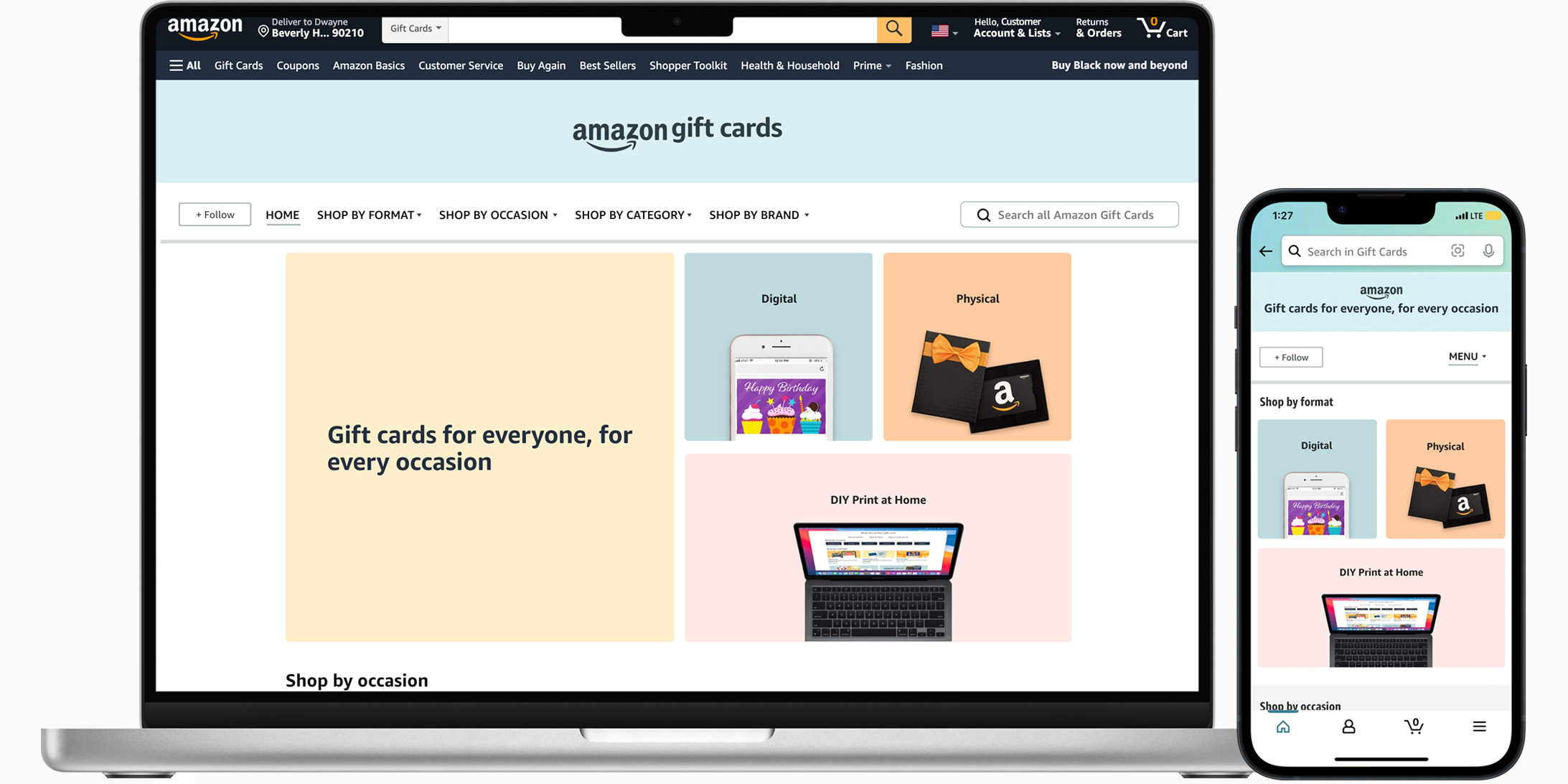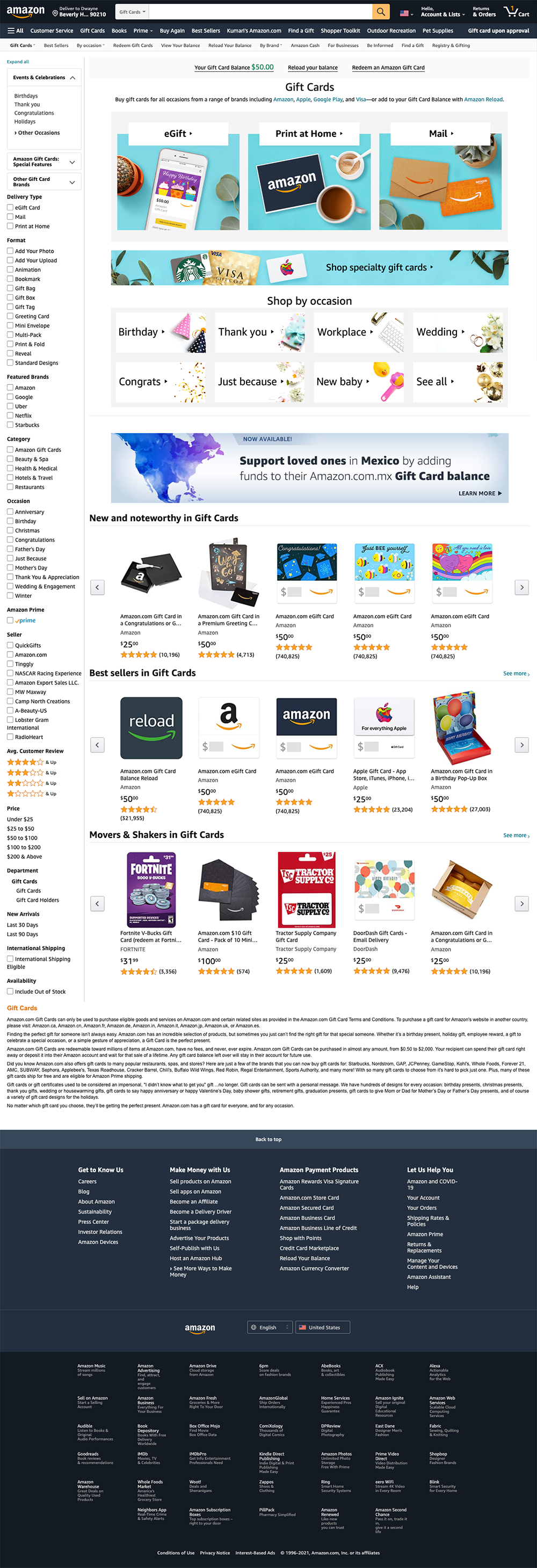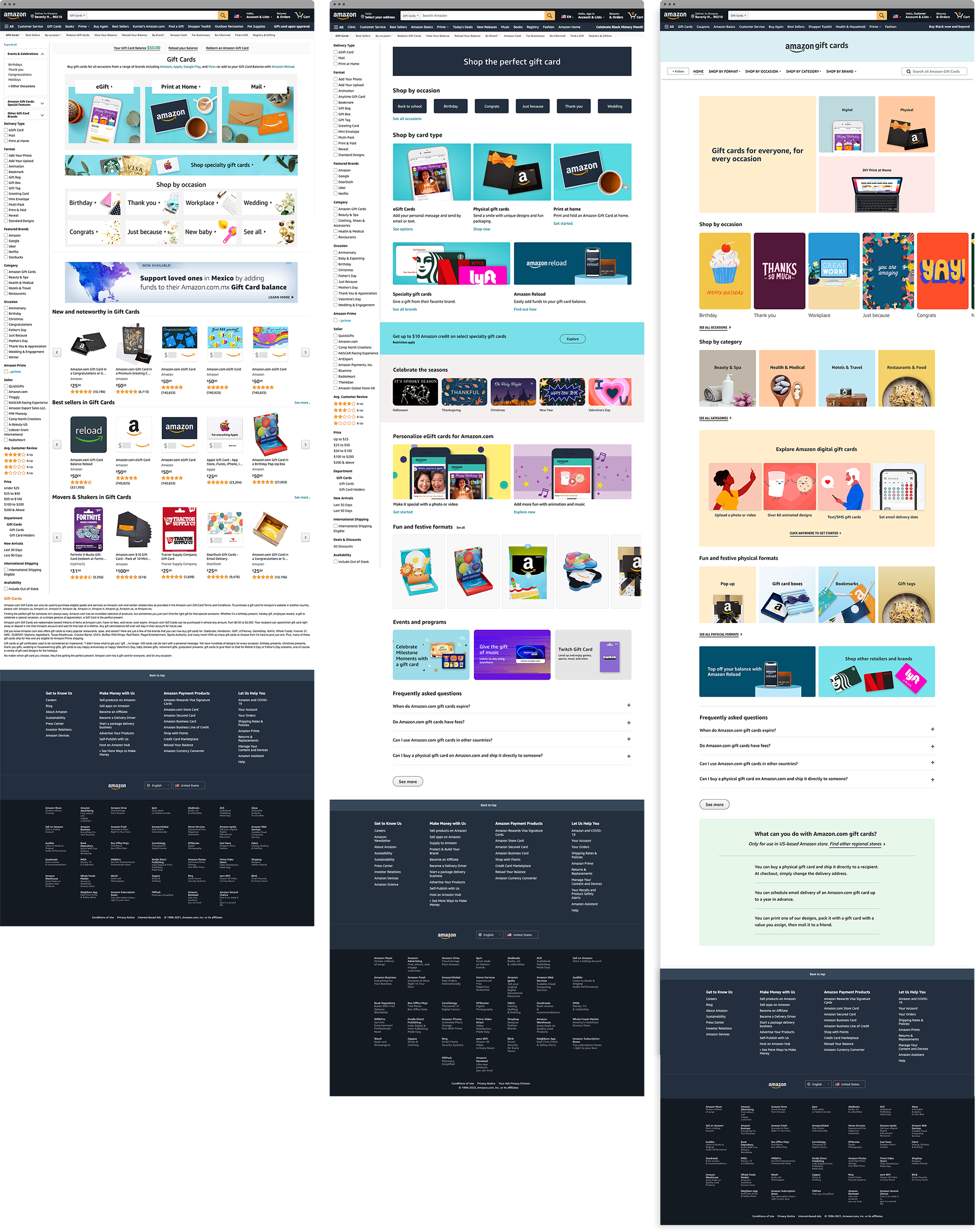Amazon Gift Cards Landing Page Redesign
An abridged case study
Company
Amazon
My Role
- Design lead
- Discovery
- Design audit
- Usability research
- Copywriting + UX Writing
- Information Architecture
- Content design
Other Team Members
- Marketing Manager (Main stakeholder)
- Product Manager (PM)
- Production Designer
- Copywriting (consultation)
Summary
The page owner (Marketing Manager) sought a redesign of the gift cards (GC) homepage for the North America market. However, they didn't quite know what they wanted or why. There's no established branding or art direction for the gift business, though some of it rolls up to the parent Retail brand.
For the sake of this case study, I'm primarily focusing on desktop, since the biggest UX problems were there. Mobile mocks are available upon request.




